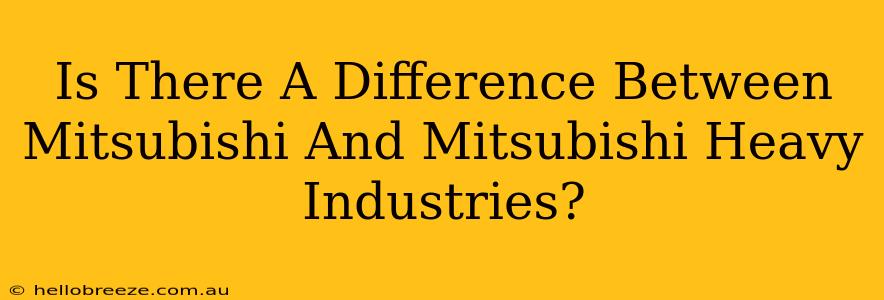Many people confuse Mitsubishi and Mitsubishi Heavy Industries (MHI). While both companies share a common heritage and the recognizable Mitsubishi logo, they are distinct entities with different focuses. Understanding their differences is crucial, especially when considering investments or researching their products.
A Shared History, Separate Paths
Both companies trace their roots back to the Mitsubishi Group, a large Japanese zaibatsu (financial conglomerate) founded in 1870. However, after World War II, the zaibatsu were dissolved, and the Mitsubishi group was broken into numerous independent companies. Mitsubishi and MHI emerged from this process as separate, albeit related, entities.
Mitsubishi: A Diversified Conglomerate
Today, Mitsubishi Corporation is a global powerhouse, a diversified conglomerate with interests in a vast array of sectors. This includes:
- Automotive: This is arguably their most well-known sector, with Mitsubishi Motors producing cars, trucks, and SUVs globally.
- Finance: Mitsubishi UFJ Financial Group is one of the world's largest financial institutions.
- Electronics: Mitsubishi Electric is a significant player in the electronics industry, producing everything from home appliances to industrial equipment.
- Heavy Machinery: While they have some presence here, it’s far less extensive than MHI's focus.
- Real Estate: Mitsubishi Estate Co., Ltd. is a major player in Japanese real estate.
Essentially, Mitsubishi is a vast network of companies, often referred to as the "Mitsubishi Group," united by the shared brand name and history but operating independently.
Mitsubishi Heavy Industries (MHI): Engineering and Manufacturing Giant
Mitsubishi Heavy Industries is a different story. It's primarily focused on heavy industry, engineering, and manufacturing. Its key areas of operation include:
- Aerospace: MHI is a major player in the aerospace industry, contributing to aircraft manufacturing and space exploration technologies.
- Energy: They're deeply involved in power generation, including nuclear power, renewable energy, and thermal power plants.
- Industrial Machinery: MHI manufactures and supplies a wide range of industrial machinery, including equipment for shipbuilding, steel manufacturing, and various other sectors.
- Defense: MHI also has a significant presence in the defense industry.
- Infrastructure: MHI contributes significantly to the design and construction of large-scale infrastructure projects.
MHI is less diversified than Mitsubishi Corporation but boasts significant expertise and market share within its chosen domains.
Key Differences Summarized:
| Feature | Mitsubishi Corporation | Mitsubishi Heavy Industries (MHI) |
|---|---|---|
| Focus | Diversified conglomerate, various sectors | Heavy industry, engineering, manufacturing |
| Scale | Vast network of numerous independent companies | Primarily a single large company |
| Automotive | Major player (Mitsubishi Motors) | Minimal direct involvement |
| Aerospace | Smaller presence | Major player |
| Energy | Presence across various energy sectors | Major player in power generation and related technologies |
| Defense | Limited direct involvement | Significant presence |
In Conclusion
While they share a common origin and the Mitsubishi name, Mitsubishi Corporation and Mitsubishi Heavy Industries are separate entities with distinct areas of expertise and business strategies. Understanding this difference is crucial for anyone researching either company or considering its products or services. They are both influential global players, but their strengths lie in remarkably different sectors.

